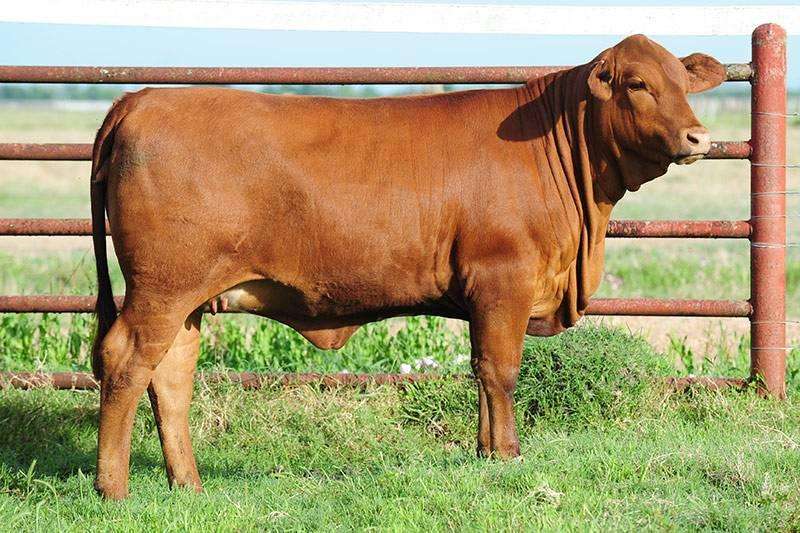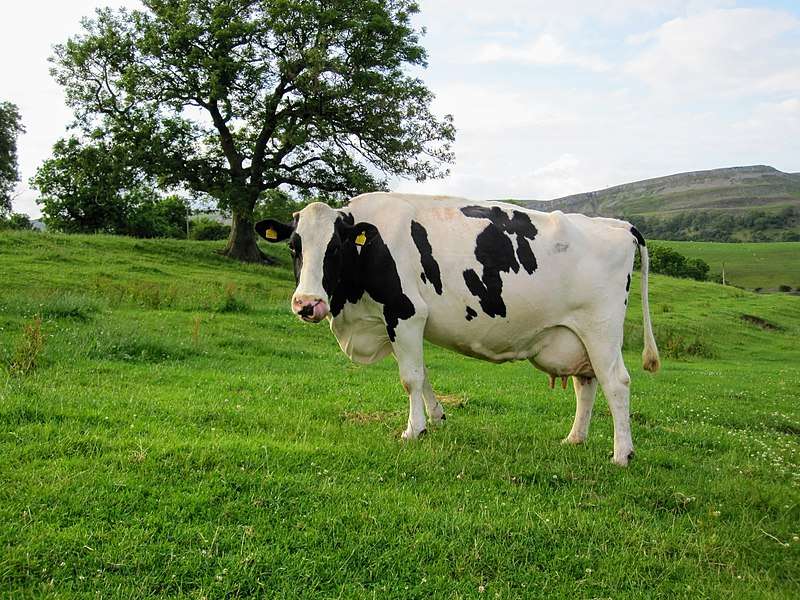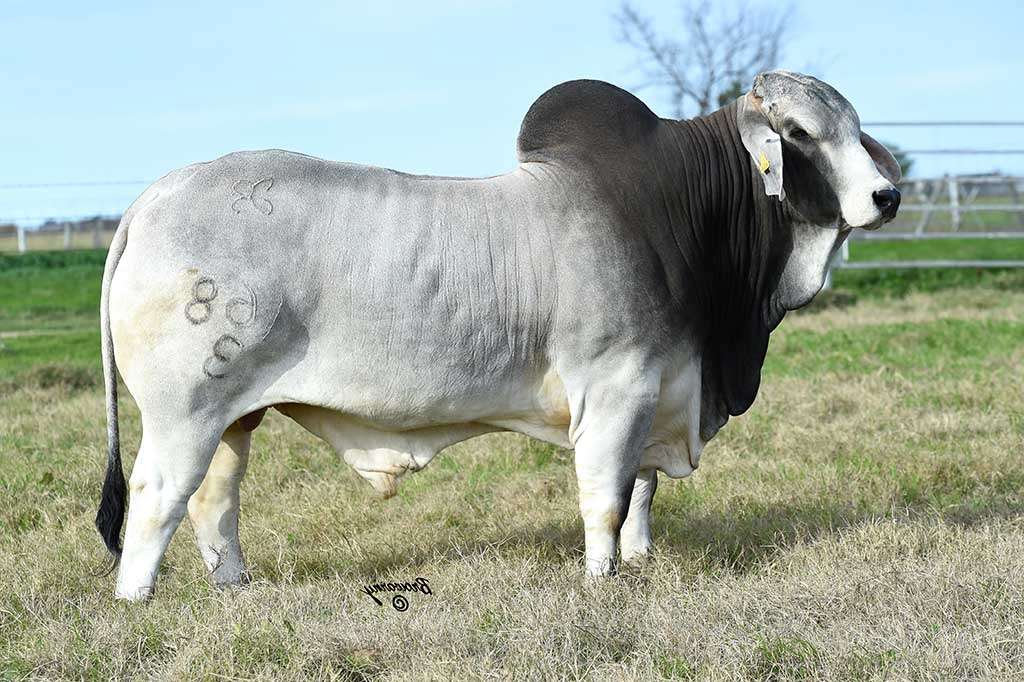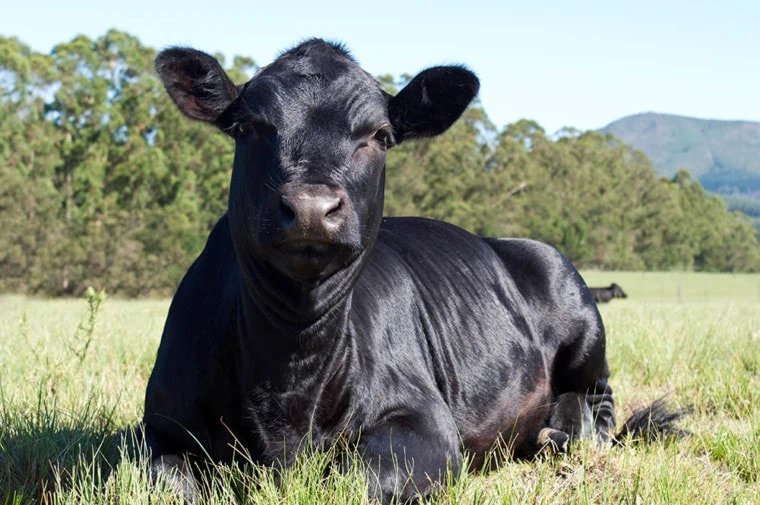
Size
1.5 meters.
Color
Black or red.
Physical appearance
Brangus cattle have a smooth coat, coloured skin, and are polled, either black or red. They have neck folds, medium to large ears, and loose skin. The bulls have a modest hump and a somewhat rounded rump. Rapid weight gain, medium to slightly late maturation, and a carcass without too much fat are further characteristics listed. Important qualities include their capacity to thrive in the warmer climates of the north and their resilience to ticks and bloat.

Characteristics and Genetics
American Angus and Brahman stock were crossed to create the hybrid breed of beef cattle known as the Brangus. The parentage of registered animals is 5/8 Angus and 3/8 Brahman. The Australian Brangus is a hybrid breed that was independently produced in Australia starting around 1950. The first organization of Brangus breeders was formed in 1949, but the endeavour to create the breed had started in 1932.
Uses
Brangus are one of the most widely used breeds of beef cattle due to their adaptability and toughness. They don’t need expensive food or particular environmental conditions to develop quickly and produce high-quality meat. Brangus beef is frequently of the highest quality and has a moderate amount of fat.
Furthermore to being valuable as beef cattle, Brangus genetics and traits are highly sought after for breeding. In an effort to create additional breeds of cattle with the Brangus’ toughness and capacity for producing meat, they are frequently crossed with other kinds of cattle.
Distribution
Brangus cattle can live in a variety of climates and are widely distributed throughout the world. They are particularly well-liked in places that are hot and muggy, like the American South and Texas. Associations for Brangus cattle can also be found in countries including Canada, Central America, Mexico, Argentina, Australia, and several regions of Africa.
Table





